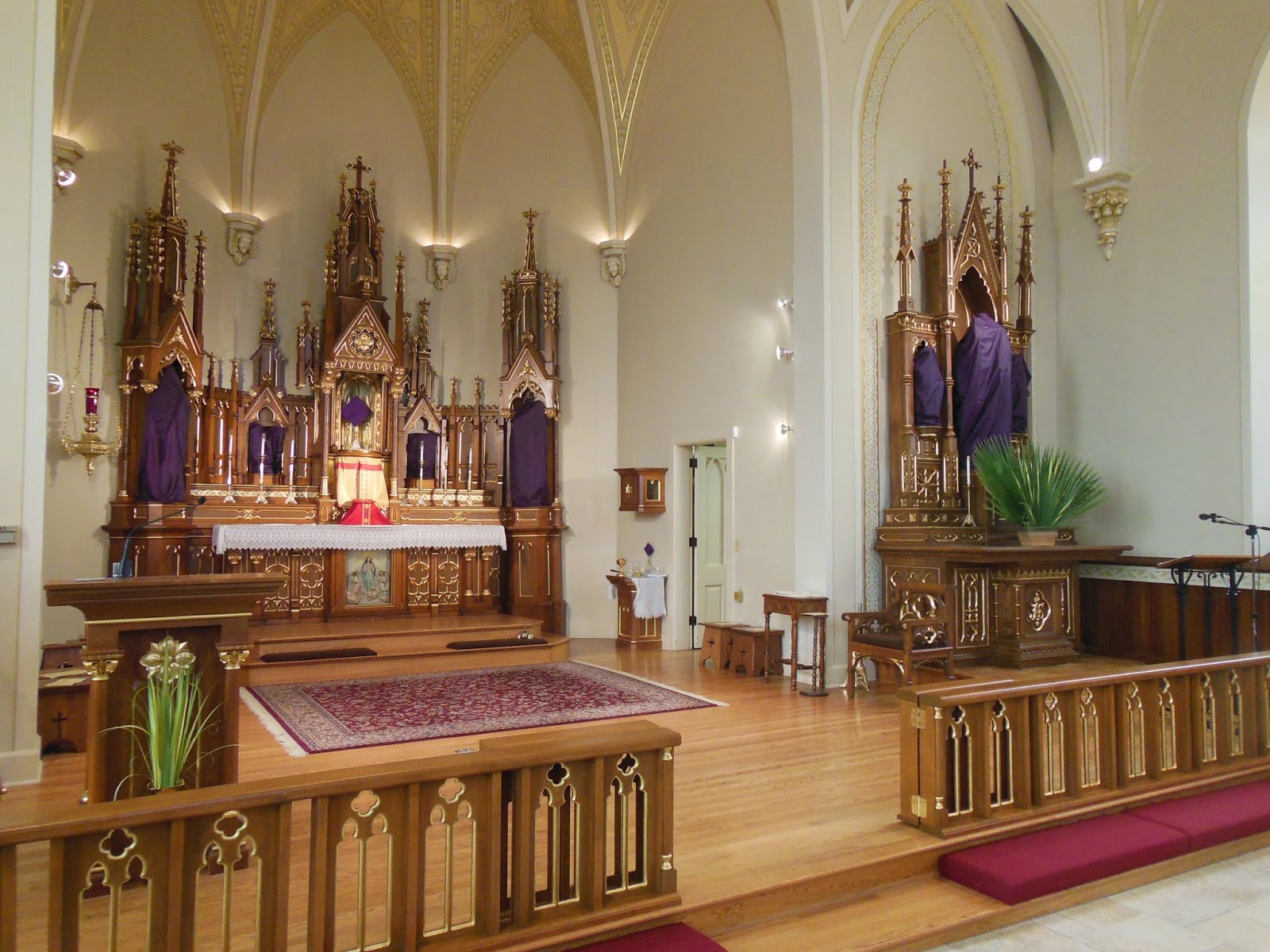Breaking new ground with this post...for the first time on this blog, we are exploring a closed church. Even when a parish has vacated a church building, the story of the structure and the parish itself is still unfolding in an empty or maybe forgotten edifice. Old St Bruno's on the western edge of Waukesha County validates this point.

This Old St.Bruno's Catholic Church (there was one more church built before and after this one) was built in 1887 for a largely rural congregation. As the original settlement near the church shifted a couple miles east to present-day Dousman, this church was closed in the mid-1950s. For being closed for nearly sixty years though, the church appears to have aged relatively well. My tour guide, St. Bruno's parish priest, gave me a good summary of why we see Old St Bruno's in the shape we do today.
In the early 1990s, several parishioners worked on their own initiative to bring life back to Old St. Bruno's. I do not have any record of what the church looked like before their restoration project, but among other things, pews were acquired from another church and new artwork was picked for the Stations of the Cross. It also looks like the items on the high altar were re-assembled for the old Latin Mass, as the sheets on the altar appeared to be written out for that purpose.
The paint on the high altar and its statues looked like it was in good shape. The detail on this Gothic high altar is striking, especially in the context of a simple rural church.
The Lamb of God, called up in Mass, but not easily noticed in ecclesiastical art. Here the Lamb of God is sitting on a book depicting the seven seals of the Apocalypse, from the Book of Revelation.
[1]
The statuary too may have come from a hodge-podge of places according to Father. This holy water font-bearing angel is in the sacristy not far from the high altar.
The side altars too are intricately designed and look well cared for, despite the fact that regular maintenance apparently hasn't continued since the restoration efforts twenty years ago. Mostly lit by the afternoon sun, this statue of Mary looks particularly nice.
Left: St. Joseph
Right: St. Therese de Liseux
A look at the pews. I'm not sure how often the Building Fund box is checked for contributions. Behind locked doors, it's painfully hard to contribute!
St. Bruno's has had four different church buildings in its history. Its current church does have a few pieces that originally were at Old St. Bruno's. Above is a statue of St. Bruno himself. Although Father told me a lot about the long and hermetic life of the German saint, the fact that I remember best is that the religious order he founded, the Carthusians, are makers of
Charteuse liqueur. After dinner drinks anyone?
IX Jesus falls for the third time.
The Stations of the Cross came from Old St Bruno's and were "antiquated" by an artist in Door County for the present church building. I found these statues quite tasteful for the current church interior. Placing them lower on the walls and having lights directly above the Stations allows many visitors to give the Stations a closer look and more seriously consider the Stations and the artwork itself.
II Jesus carries his Cross. Detail.
Back at Old St.Bruno's a neighbor keeps a birdhouse, or possibly a Little Old St. Bruno's, complete with a cornerstone (not shown).
Old St. Bruno's Catholic Church, St. Bruno Parish
St. Bruno's Catholic Church, St. Bruno Parish
Additional Sources
[1]http://www.romeofthewest.com/2008/02/photos-of-saint-peter-church-in-saint.html
























